Kelly Jensen's Blog, page 95
January 2, 2015
2014 Reading Stats and Data Sheets
Every year, I like to take a look at my reading in terms of data. Who was I reading? What was I reading? Were there any trends? I've been doing a statistical breakdown of these for a few years now, and I've gotten it to a science where I don't need to look at too much information to get a clear picture of where I am, what I want to do in the next year, and where I could improve.
I'd planned on posting this before the end of 2014, but I made some decisions in terms of stats keeping that I wanted to change. I wanted to look not just at the books I read, but also the books that I bought. Am I putting my money where my mouth is when it comes to things like diversity? What am I buying?
Then I decided, too, that I wanted to set up a series of spreadsheets for 2015 that looked not just at my books read and books purchased data, but also the books I received from publishers. Am I getting diverse books if I don't ask for them? What is being sent to me in multiples? I'm not sure this data will tell me a whole lot at the end of this year, but I know it'll be interesting to look at. I've already found there are books I'm getting in multiple.
Because it's the start of a new year and I know other people are looking to be more mindful of their own reading and purchasing habits, I'm making my basic Google Doc available for anyone to use. There are three sheets here -- one for reading, one for purchasing, and one for review copies received. Save a copy of this publicly-available doc on your own Google Drive or download it to your computer and feel free to adapt it to your own needs. All of the categories are pretty self-explanatory.
If you want to push your reading and data collection even further, I can't recommend the Ultimate Reading Spreadsheet from Book Riot highly enough. It looks at way more than I do, but I know how useful that can be.
Here's a look at my last year in reading.
In 2014, I read a total of 113 books. There were a total of 119 authors represented, which included illustrators and collaborators on graphic novels and comics. I did not include the translators of the two books I read that were in translation in that count.
By gender:

I read a total of 24 books written or illustrated by men and a total of 95 written or illustrated by women. I'm okay with this break down. I might try to read more men -- specifically men of color -- in 2015.
By audience/category:

Out of the 113 books I read in 2014, 82 were YA, 27 were adult, and 4 were middle grade. I was surprised to see that I read that many adult books. I'm hoping in 2014 to read more adult books -- I'm especially hoping to read a good chunk of memoirs by women of color.
Other data:
21 of the books I read were written by authors who debuted in 2014. This is a stat I'm pleased with.8 of the books I read had LGBTQIA+ themes to them. This is a low number, especially considering I thought I was reading a good spread of these books. But it turns out I happened to read many in a row, and then I didn't read many more after. I'm going to improve here in 2015.32, or 28%, of the books I read this year were written by people of color or featured main characters of color. I've included Native authors here, even though Deb Reese explains why Native authors aren't "people of color," for the sake of my own record keeping.
Here's a look at my 2014 in terms of books purchased.
Before I looked at the books I bought, I thought I didn't buy many books. When I pulled them all out, I'd purchased a total of 46 books, which is more than 3 per month. That's way more than I thought and far higher than the average person (which ranges somewhere between 6 and 11, depending on what sources you read). There were a total of 47 authors and for some reason, I didn't include the illustrators in this round.
Not included in this data are the books I bought for prizes for readers here at Stacked. These are only titles I added to my personal library.
By gender:
 36 of the books I bought in 2014 were written by women, while 11 were written by men. These percentages look pretty darn close to the ones for the genders of authors of books I read in 2014.
36 of the books I bought in 2014 were written by women, while 11 were written by men. These percentages look pretty darn close to the ones for the genders of authors of books I read in 2014.
By or about people of color:

Almost one-third of the books I bought were written by people of color or featured main characters of color. Again, I included Native authors and characters in this grouping. This number was solid; this is something I am conscious of when I buy books. One night I walked out of a bookstore this year -- a chain -- because I could not find one book in the YA section by a person of color that wasn't on the New York Times list to buy.
In 2015, I hope to up this percentage even more.
By category/audience:

I bought slightly more adult, when non-fiction and fiction are combined, than I did YA. But not much. Since I tend to read more YA, I tend to borrow it much more frequently than I do buy it, because otherwise, I would never have any money.
Keeping track of my reading means when the year winds down and I start thinking about the next year's reading, I'm able to be more intentional in my choices. Intentionality is what guides my reading, not a set of goals or bench markers.







 Related Stories"Best of YA" Lists By the Numbers: 2011 - 2014 Stats, Comparisons, and Thoughts
Related Stories"Best of YA" Lists By the Numbers: 2011 - 2014 Stats, Comparisons, and Thoughts
I'd planned on posting this before the end of 2014, but I made some decisions in terms of stats keeping that I wanted to change. I wanted to look not just at the books I read, but also the books that I bought. Am I putting my money where my mouth is when it comes to things like diversity? What am I buying?
Then I decided, too, that I wanted to set up a series of spreadsheets for 2015 that looked not just at my books read and books purchased data, but also the books I received from publishers. Am I getting diverse books if I don't ask for them? What is being sent to me in multiples? I'm not sure this data will tell me a whole lot at the end of this year, but I know it'll be interesting to look at. I've already found there are books I'm getting in multiple.
Because it's the start of a new year and I know other people are looking to be more mindful of their own reading and purchasing habits, I'm making my basic Google Doc available for anyone to use. There are three sheets here -- one for reading, one for purchasing, and one for review copies received. Save a copy of this publicly-available doc on your own Google Drive or download it to your computer and feel free to adapt it to your own needs. All of the categories are pretty self-explanatory.
If you want to push your reading and data collection even further, I can't recommend the Ultimate Reading Spreadsheet from Book Riot highly enough. It looks at way more than I do, but I know how useful that can be.
Here's a look at my last year in reading.
In 2014, I read a total of 113 books. There were a total of 119 authors represented, which included illustrators and collaborators on graphic novels and comics. I did not include the translators of the two books I read that were in translation in that count.
By gender:

I read a total of 24 books written or illustrated by men and a total of 95 written or illustrated by women. I'm okay with this break down. I might try to read more men -- specifically men of color -- in 2015.
By audience/category:

Out of the 113 books I read in 2014, 82 were YA, 27 were adult, and 4 were middle grade. I was surprised to see that I read that many adult books. I'm hoping in 2014 to read more adult books -- I'm especially hoping to read a good chunk of memoirs by women of color.
Other data:
21 of the books I read were written by authors who debuted in 2014. This is a stat I'm pleased with.8 of the books I read had LGBTQIA+ themes to them. This is a low number, especially considering I thought I was reading a good spread of these books. But it turns out I happened to read many in a row, and then I didn't read many more after. I'm going to improve here in 2015.32, or 28%, of the books I read this year were written by people of color or featured main characters of color. I've included Native authors here, even though Deb Reese explains why Native authors aren't "people of color," for the sake of my own record keeping.
Here's a look at my 2014 in terms of books purchased.
Before I looked at the books I bought, I thought I didn't buy many books. When I pulled them all out, I'd purchased a total of 46 books, which is more than 3 per month. That's way more than I thought and far higher than the average person (which ranges somewhere between 6 and 11, depending on what sources you read). There were a total of 47 authors and for some reason, I didn't include the illustrators in this round.
Not included in this data are the books I bought for prizes for readers here at Stacked. These are only titles I added to my personal library.
By gender:
 36 of the books I bought in 2014 were written by women, while 11 were written by men. These percentages look pretty darn close to the ones for the genders of authors of books I read in 2014.
36 of the books I bought in 2014 were written by women, while 11 were written by men. These percentages look pretty darn close to the ones for the genders of authors of books I read in 2014. By or about people of color:

Almost one-third of the books I bought were written by people of color or featured main characters of color. Again, I included Native authors and characters in this grouping. This number was solid; this is something I am conscious of when I buy books. One night I walked out of a bookstore this year -- a chain -- because I could not find one book in the YA section by a person of color that wasn't on the New York Times list to buy.
In 2015, I hope to up this percentage even more.
By category/audience:

I bought slightly more adult, when non-fiction and fiction are combined, than I did YA. But not much. Since I tend to read more YA, I tend to borrow it much more frequently than I do buy it, because otherwise, I would never have any money.
Keeping track of my reading means when the year winds down and I start thinking about the next year's reading, I'm able to be more intentional in my choices. Intentionality is what guides my reading, not a set of goals or bench markers.







 Related Stories"Best of YA" Lists By the Numbers: 2011 - 2014 Stats, Comparisons, and Thoughts
Related Stories"Best of YA" Lists By the Numbers: 2011 - 2014 Stats, Comparisons, and Thoughts
Published on January 02, 2015 11:58
December 23, 2014
Stacked's Top Ten Posts of 2014 & Our Vacation Announcement

We are taking a break (though it won't look like the picture above for either of us).
We'll be back in early January.
See you then.
If you can't stand the thought of no posts here for the next couple of weeks, then may we interest you in revisiting some of our most popular posts from 2014?

Ferguson, Race, Civil Rights, Social Activism, and YA Fiction: A Round-up of ReadingFemale Sexuality in YA Fiction: A Look at the LandscapeProtagonists of Color in YA Science Fiction and FantasyWhile We Run by Karen Healey (Review)Why Talking About Girls Reading MattersThe Unlikable Female Protagonist: A Field Guide to Identification in the Wild (Guest Post by Sarah McCarry)The Reductive Approach to YA Revisited: Contemporary YA & Generosity to ReadersGet Genrefied: Fairy Tale Re-tellingsGet Genrefied: YA Urban FictionCrossing the Line: Adult-Teen Relationships in YA and Beyond








Published on December 23, 2014 22:00
December 22, 2014
A Few Cybils Reads - Part X
Cybils season is almost over. I really enjoyed participating in Round 1 this year, and I hope you've enjoyed reading about a few of the nominated titles each week. As it does every year, the Cybils force me to read books I never would have read otherwise, and I've been pleasantly surprised by many of them. That said, it's going to be really nice to kick off 2015 reading books that I've been so eager to dive into but have neglected due to Cybils duties (The Winner's Crime, I'm looking at you).
Here's my last roundup of Cybils titles for the year.
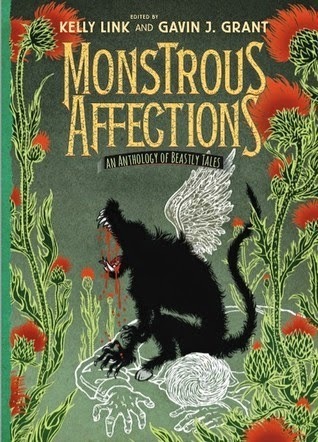 Monstrous Affections: An Anthology of Beastly Tales
edited by Kelly Link and Gavin J. Grant
Monstrous Affections: An Anthology of Beastly Tales
edited by Kelly Link and Gavin J. Grant
I generally don't read short story collections. They're usually uneven, with some stories that are fantastic, some that are awful, and most that fall somewhere in between. Monstrous Affections is no different, though I'm glad I got a chance to read the standouts.
Out of the fifteen stories in the anthology, I really dug two of them: Ten Rules for Being an Intergalactic Smuggler (the Successful Kind) by Holly Black and Wings in the Morning by Sarah Rees Brennan. Black's story is set in outer space and has a sort of Firefly feel, but it's a touch darker and uses the second person perspective in a clever way to great effect. Plus it has aliens! Brennan's story is set in a world populated with humans, harpies, elves, and other magical creatures who must keep their border safe from invaders. It opens with our protagonist's mother telling him he's half-harpy because she has needs when his father is away and she hooked up with a harpy once because she's rather adventurous and well wouldn't you know, the harpy is his biological father and not the human man who raised him. It's done in such a funny way, I was hooked immediately - there's so much character and voice in the story. The bulk of the story is a romance between the main character and his best (male) friend/enemy, but there's also some interesting stuff with the elf culture, whose gender roles are the opposite of humans' traditional roles. I would definitely read a novel-length book about these characters and their world.
Honorable mentions go to Patrick Ness and Joshua Lewis, whose stories I liked but didn't love. Also of note is the Introduction, which may be my third favorite "story." It includes a fun, funny little quiz that sets a great tone for the collection. The book itself is beautiful, slightly oversize with a unique cover and designed with ample white space. It would sit very pretty on your shelf.
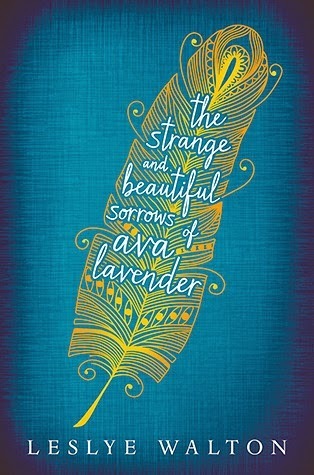 The Strange and Beautiful Sorrows of Ava Lavender
by Leslye Walton
The Strange and Beautiful Sorrows of Ava Lavender
by Leslye Walton
Sixteen year old Ava narrates this book, telling first the story of her grandmother, then her mother, focusing mainly on the way love has destroyed their lives. This family has always been foolish when it comes to love, and Ava - a girl born with wings - is perhaps no different. The events of the story, beginning with Ava's grandmother and her doomed siblings, all lead up to a terrible tragedy hinted at by Ava's brother in cryptic language that becomes clear much too late.
This is a beautifully-written book, using magical realism in a way that makes you hurt. It's also a tremendous downer. It's certainly unique and ambitious - it tells a three-generation story in about 300 pages, and it feels fully developed. I think it's successful in what it tried to do, but it also gave off a very strong adult feeling to me rather than YA. Perhaps that's because the teenage narrator never felt like the main character - she has an omniscient POV and narrates in a somewhat detached way. It's her mother, whom we see as a child, then a young woman, then a middle-aged woman, who feels like the most central character. She's also the one who seems to grow the most. The Goodreads description is a little misleading since Ava herself (as a character, not a narrator) doesn't enter the picture until pretty late in the book. This is a Candlewick book, which doesn't surprise me in the least.
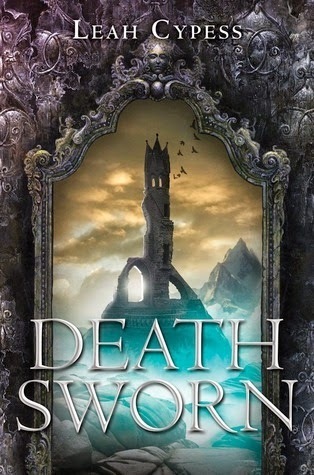 Death Sworn
by Leah Cypess
Death Sworn
by Leah Cypess
Ileni was a magical prodigy, brought to a magic school that promised to sharpen her talents. Key word: was. She's been losing her magic steadily, trying to hide it from her teachers. Ileni supposes they've suspected this, because she's sent to be the new magic tutor for a group of assassins with whom the magicians have an uneasy alliance. The last two magic tutors died mysteriously, and Ileni figures they were probably murdered. Though Ileni figures her assignment is a death sentence, she's determined to survive as long as she can, and hopefully figure out what happened to her predecessors.
This is a high fantasy novel with a very strong sense of place. The assassins live in a set of caves, giving the book a claustrophobic feel and enhancing Ileni's sense of being trapped. It also features a complicated backstory, with shifting alliances, exiled magicians, assassins who may be rebels, and lots of political maneuvering - off the page and on it. What is said is not always what is meant. Ileni must learn to listen for subtext; her life depends on it. She also must learn to defend herself without the aid of her magic, and hide the fact that her magic is disappearing as long as she can. As a reader, I felt Ileni's persistent danger keenly, and I appreciated that Ileni showed fear and didn't always know how best to protect herself. There's a minor romance here, but the real highlight is the plot, whose pieces fall together so neatly and brilliantly at the end. I'm a sucker for a well-plotted book, and this one fits the bill. This is a great read for fans of high fantasy - it's got magic, kingdoms, royalty, war, and all the other good stuff we love so much.






 Related StoriesA Few Cybils Reads - Part VIIIA Few Cybils Reads - Part IX (Time Travel Edition)A Few Cybils Reads - Part IV
Related StoriesA Few Cybils Reads - Part VIIIA Few Cybils Reads - Part IX (Time Travel Edition)A Few Cybils Reads - Part IV
Here's my last roundup of Cybils titles for the year.
 Monstrous Affections: An Anthology of Beastly Tales
edited by Kelly Link and Gavin J. Grant
Monstrous Affections: An Anthology of Beastly Tales
edited by Kelly Link and Gavin J. GrantI generally don't read short story collections. They're usually uneven, with some stories that are fantastic, some that are awful, and most that fall somewhere in between. Monstrous Affections is no different, though I'm glad I got a chance to read the standouts.
Out of the fifteen stories in the anthology, I really dug two of them: Ten Rules for Being an Intergalactic Smuggler (the Successful Kind) by Holly Black and Wings in the Morning by Sarah Rees Brennan. Black's story is set in outer space and has a sort of Firefly feel, but it's a touch darker and uses the second person perspective in a clever way to great effect. Plus it has aliens! Brennan's story is set in a world populated with humans, harpies, elves, and other magical creatures who must keep their border safe from invaders. It opens with our protagonist's mother telling him he's half-harpy because she has needs when his father is away and she hooked up with a harpy once because she's rather adventurous and well wouldn't you know, the harpy is his biological father and not the human man who raised him. It's done in such a funny way, I was hooked immediately - there's so much character and voice in the story. The bulk of the story is a romance between the main character and his best (male) friend/enemy, but there's also some interesting stuff with the elf culture, whose gender roles are the opposite of humans' traditional roles. I would definitely read a novel-length book about these characters and their world.
Honorable mentions go to Patrick Ness and Joshua Lewis, whose stories I liked but didn't love. Also of note is the Introduction, which may be my third favorite "story." It includes a fun, funny little quiz that sets a great tone for the collection. The book itself is beautiful, slightly oversize with a unique cover and designed with ample white space. It would sit very pretty on your shelf.
 The Strange and Beautiful Sorrows of Ava Lavender
by Leslye Walton
The Strange and Beautiful Sorrows of Ava Lavender
by Leslye WaltonSixteen year old Ava narrates this book, telling first the story of her grandmother, then her mother, focusing mainly on the way love has destroyed their lives. This family has always been foolish when it comes to love, and Ava - a girl born with wings - is perhaps no different. The events of the story, beginning with Ava's grandmother and her doomed siblings, all lead up to a terrible tragedy hinted at by Ava's brother in cryptic language that becomes clear much too late.
This is a beautifully-written book, using magical realism in a way that makes you hurt. It's also a tremendous downer. It's certainly unique and ambitious - it tells a three-generation story in about 300 pages, and it feels fully developed. I think it's successful in what it tried to do, but it also gave off a very strong adult feeling to me rather than YA. Perhaps that's because the teenage narrator never felt like the main character - she has an omniscient POV and narrates in a somewhat detached way. It's her mother, whom we see as a child, then a young woman, then a middle-aged woman, who feels like the most central character. She's also the one who seems to grow the most. The Goodreads description is a little misleading since Ava herself (as a character, not a narrator) doesn't enter the picture until pretty late in the book. This is a Candlewick book, which doesn't surprise me in the least.
 Death Sworn
by Leah Cypess
Death Sworn
by Leah CypessIleni was a magical prodigy, brought to a magic school that promised to sharpen her talents. Key word: was. She's been losing her magic steadily, trying to hide it from her teachers. Ileni supposes they've suspected this, because she's sent to be the new magic tutor for a group of assassins with whom the magicians have an uneasy alliance. The last two magic tutors died mysteriously, and Ileni figures they were probably murdered. Though Ileni figures her assignment is a death sentence, she's determined to survive as long as she can, and hopefully figure out what happened to her predecessors.
This is a high fantasy novel with a very strong sense of place. The assassins live in a set of caves, giving the book a claustrophobic feel and enhancing Ileni's sense of being trapped. It also features a complicated backstory, with shifting alliances, exiled magicians, assassins who may be rebels, and lots of political maneuvering - off the page and on it. What is said is not always what is meant. Ileni must learn to listen for subtext; her life depends on it. She also must learn to defend herself without the aid of her magic, and hide the fact that her magic is disappearing as long as she can. As a reader, I felt Ileni's persistent danger keenly, and I appreciated that Ileni showed fear and didn't always know how best to protect herself. There's a minor romance here, but the real highlight is the plot, whose pieces fall together so neatly and brilliantly at the end. I'm a sucker for a well-plotted book, and this one fits the bill. This is a great read for fans of high fantasy - it's got magic, kingdoms, royalty, war, and all the other good stuff we love so much.







 Related StoriesA Few Cybils Reads - Part VIIIA Few Cybils Reads - Part IX (Time Travel Edition)A Few Cybils Reads - Part IV
Related StoriesA Few Cybils Reads - Part VIIIA Few Cybils Reads - Part IX (Time Travel Edition)A Few Cybils Reads - Part IV
Published on December 22, 2014 22:00
December 21, 2014
Wrapping up the 2014 Debut YA Novels
Did you catch the Morris Awards shortlist announcement a couple of weeks ago? Of the five finalists, I've only read Gabi, A Girl in Pieces. I'm hoping to read another title or two before the end of the year. It's a nice mix of genres represented, and most interesting to me, none of the five titles are from big publishers -- everything is from a smaller or independent press. Kudos to the work of those on the committee for giving those "smaller" books a real close eye. I am eager to see what title is the ultimate winner when it's announced at ALA in a little over a month.
Since November and December have the fewest number of book releases and thus, the fewest number of debut YA novels coming out, I've combined the two into one post. As always, debut is defined as first books published, period. I don't include titles that are under pseudonyms or that are the author's first YA book if they've published elsewhere before.
As always, if I've missed a title from a traditional publisher, let me know in the comments. All descriptions are from WorldCat, unless otherwise noted.
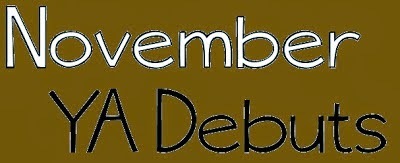
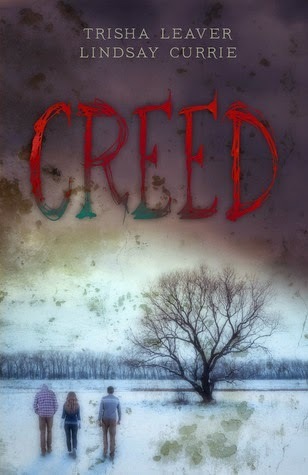
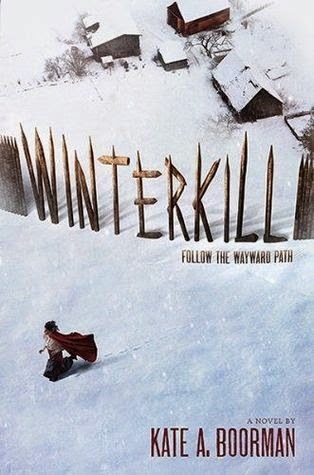
Creed by Trisha Leaver and Lindsay Currie: When their car breaks down, Dee, her boyfriend Luke, and his brother Mike walk through a winter storm to take refuge in a nearby deserted town called Purity Springs, but in the morning they see the town is populated with a deadly cult and find themselves at the mercy of the charismatic leader, Elijah Hawkins.
Winterkill by Kate A. Boorman: When the revered leader of her settlement, a dark, isolated land with merciless winters and puritanical rulers, asks Emmeline for her hand it is a rare opportunity, but not only does she love another man, she cannot ignore dreams that urge her into the dangerous and forbidden woods that took her grandmother's life and her family's reputation.
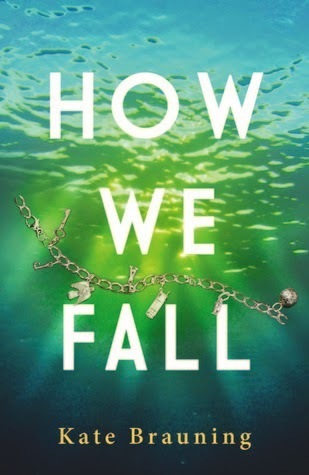
How We Fall by Kate Brauning: As first cousins, seventeen-year-olds Jackie and Marcus know their love is taboo, but living in the same house, working at the family's vegetable stand, and especially seeking Jackie's missing best friend, Ellie, keep drawing them together.

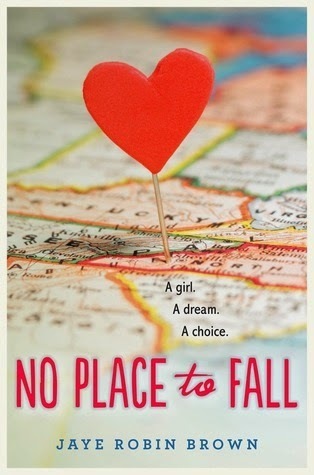
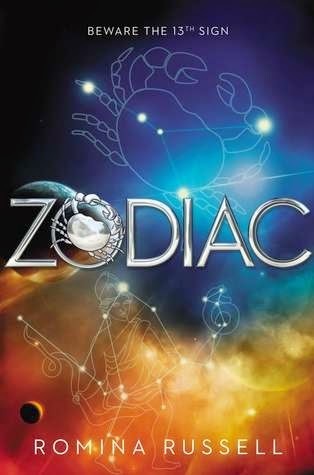
No Place to Fall by Jaye Robin Brown: Sixteen-year-old Amber Vaughn dreams of attending the North Carolina School of the Arts to gain confidence in using her amazing singing voice, but her family's falling apart and she's torn between two boys.
Zodiac by Romina Russell: When a violent blast strikes the moons of Cancer, sending its ocean planet off-kilter and killing thousands of citizens, Rhoma Grace, a sixteen-year-old student from House Cancer, must convince twelve worlds to unite as one Zodiac against Ophiuchus, the exiled thirteenth Guardian of Zodiac legend, who has returned to exact his revenge across the Galaxy.
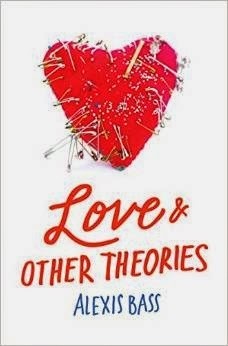
Love & Other Theories by Alexis Bass: Seventeen-year-old Aubrey and her three best friends have perfected the art of dating in high school, but their theories on love will be put to the test when gorgeous senior Nathan moves to town.
If you're getting started on planning your 2015 reading, may I suggest having the following debut YA group blogs on your radar? This is where I pull a lot of my information for these posts, and I know they offer more than book lists. If you dig debuts, you can't go wrong here:
Freshman FifteensFearless FifteenersThe Class of 2K15






 Related StoriesOctober Debut YA NovelsSeptember Debut YA NovelsAugust Debut YA Novels
Related StoriesOctober Debut YA NovelsSeptember Debut YA NovelsAugust Debut YA Novels
Since November and December have the fewest number of book releases and thus, the fewest number of debut YA novels coming out, I've combined the two into one post. As always, debut is defined as first books published, period. I don't include titles that are under pseudonyms or that are the author's first YA book if they've published elsewhere before.
As always, if I've missed a title from a traditional publisher, let me know in the comments. All descriptions are from WorldCat, unless otherwise noted.



Creed by Trisha Leaver and Lindsay Currie: When their car breaks down, Dee, her boyfriend Luke, and his brother Mike walk through a winter storm to take refuge in a nearby deserted town called Purity Springs, but in the morning they see the town is populated with a deadly cult and find themselves at the mercy of the charismatic leader, Elijah Hawkins.
Winterkill by Kate A. Boorman: When the revered leader of her settlement, a dark, isolated land with merciless winters and puritanical rulers, asks Emmeline for her hand it is a rare opportunity, but not only does she love another man, she cannot ignore dreams that urge her into the dangerous and forbidden woods that took her grandmother's life and her family's reputation.

How We Fall by Kate Brauning: As first cousins, seventeen-year-olds Jackie and Marcus know their love is taboo, but living in the same house, working at the family's vegetable stand, and especially seeking Jackie's missing best friend, Ellie, keep drawing them together.



No Place to Fall by Jaye Robin Brown: Sixteen-year-old Amber Vaughn dreams of attending the North Carolina School of the Arts to gain confidence in using her amazing singing voice, but her family's falling apart and she's torn between two boys.
Zodiac by Romina Russell: When a violent blast strikes the moons of Cancer, sending its ocean planet off-kilter and killing thousands of citizens, Rhoma Grace, a sixteen-year-old student from House Cancer, must convince twelve worlds to unite as one Zodiac against Ophiuchus, the exiled thirteenth Guardian of Zodiac legend, who has returned to exact his revenge across the Galaxy.

Love & Other Theories by Alexis Bass: Seventeen-year-old Aubrey and her three best friends have perfected the art of dating in high school, but their theories on love will be put to the test when gorgeous senior Nathan moves to town.
If you're getting started on planning your 2015 reading, may I suggest having the following debut YA group blogs on your radar? This is where I pull a lot of my information for these posts, and I know they offer more than book lists. If you dig debuts, you can't go wrong here:
Freshman FifteensFearless FifteenersThe Class of 2K15







 Related StoriesOctober Debut YA NovelsSeptember Debut YA NovelsAugust Debut YA Novels
Related StoriesOctober Debut YA NovelsSeptember Debut YA NovelsAugust Debut YA Novels
Published on December 21, 2014 22:00
December 18, 2014
This Week Around The Web
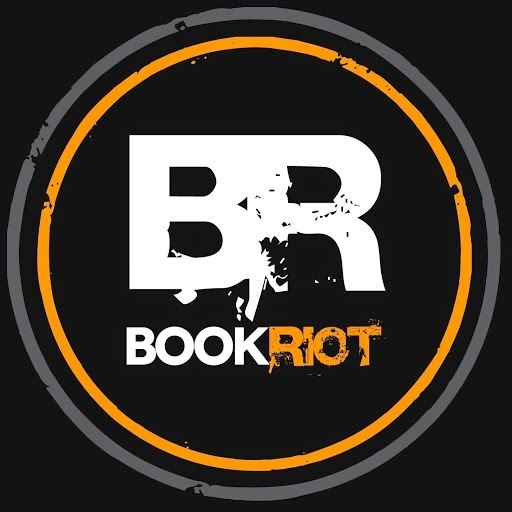
This week over at Book Riot. . .
I talked about "boy books" and "girl books" and how those gendered divisions are silly and difficult to make in light of what Amazon said were their top 20 selling children's/YA books this year. This week's "3 On A YA Theme" is about 3 YA books that feature characters who have disabilities. Women in fiction deserve better and they deserve better than just the Bechdel Test, or, why don't we have better tools and ways to talk about how females are written in fiction?
Kimberly made an awesome infographic for her library this week that we have to share, since it's probably of interest to lots of our readers:

You can see the bigger version and save it/share it from here.







 Related StoriesThis Week at Book RiotThis Week on Book Riot & The Book Smugglers
Related StoriesThis Week at Book RiotThis Week on Book Riot & The Book Smugglers
Published on December 18, 2014 22:00
December 16, 2014
Reviews, Reviews, Reviews
I spend a good amount of time on Goodreads. I've built up a solid group of friends whose reviews I see first beneath a book, and they generally give me a good idea of whether that book is worth my time.
But sometimes I venture lower, to the reviews from people I don't know. Sometimes when I'm feeling particularly masochistic, I'll view only the one star reviews for a book I loved. But usually, it's out of simple curiosity. I want different perspectives. I want to know what good things people see in a book I thought was terrible. I want to be reminded that a book I love isn't for everyone, and I want to see why. Most of these reviews actually have good points and help to broaden my own perspective.
Inevitably, though, I'll read a review that will irritate me. And I don't mean the one star reviews of books I loved. I can get over that. I mean the ones that get the facts wrong, or dismiss a book because its characters are unlikeable. You know the kind. Lately, three specific things have jumped out at me, three things that I wish people would stop doing when they write their reviews.
1. "TSTL"In case you're unaware, "tstl" means "too stupid to live" and is used in reference to characters whose actions seem, well, stupid. It's all well and good to call out a stupid action that stems not from character, but from the need to further the plot, but this "tstl" designation is not relegated to those instances. It's used to describe protagonists - overwhelmingly girls - who do things the reader, personally, would not have done, things that have negative consequences.
There are so many problems with this. Firstly, you as the reader are not the character. We place a lot of importance on characters being "relatable" to us, perhaps too much. But the author's job is not to create a character that would act the same way you would in a particular situation. Her actions don't have to be relatable. In fact, they should be strange to us sometimes, because humans are strange and don't act sensibly. They don't act in the ways we would all the time. That's why we have conflict, and conflict is why we have stories.
Secondly, teenagers do stupid things. I'm a smart person and I did tons of stupid shit as a teenager. Be honest: so did you. Heck, a lot of them were probably over someone you had a crush on. You probably still do stupid things as an adult. A character behaving in a way that is stupid does not make a book bad, nor does it make that character inherently stupid. It just means the book is about a human being.
2. "Selfish" charactersIn multiple reviews of Mary E. Pearson's The Kiss of Deception, Lia is called out for being selfish. She's the princess of a kingdom and her parents are about to marry her off to a prince from another kingdom whom she has never met. She decides she'd rather not, and she runs away.
Let's just set aside the fact that teens (and grown ups) often do things that are selfish, just like they often do things that are stupid. There is a larger problem at work here, and it's one I see as very gendered. In a lot of our social discourse, women and girls are expected to sacrifice for others, and the lack of sacrifice is framed as selfishness. Women who choose not to have children or who uproot their families for a lucrative job are often called selfish. Girls who turn down a date with a "nice" guy they're not attracted to are often called selfish. Women and girls who want to choose the way they live their lives are called selfish over and over again.
It shouldn't have come as a surprise to me that Lia - one of my favorite fictional characters this year - was subjected to this as well, but it did. I read so many fantasy novels when I myself was a teenager that featured girls escaping unwanted arranged marriages. There wasn't even a question in my mind of the girl's selfishness or selflessness. Why would she marry someone she didn't love? Of course she'd want to escape! I was so floored reading these reviews from all these readers who apparently expected Lia to marry someone she had never met, sleep with him, have babies, and so on, to facilitate a political treaty. She's selfish because she doesn't want her entire life, literally her entire existence, to be one giant sacrifice? Because she dares to choose her own life? Would you choose this for yourself or your daughter? What are we teaching our kids when we say that Lia's actions are selfish? That girls should be meek and accept their parents' directives, even if they know it will make them unhappy? That the only life worth living is the one where all your own wants and desires are subservient to someone else's?
So no, Lia's decision to flee this marriage, one that she knows is predicated on a lie (she can't do what her parents say she can do, remember!) is not selfish. It's normal. It's brave. It's feminist. It's what draws so many teen girls to fantasy fiction - girls standing up and saying to others, through their words or actions, that their lives belong to them. What's selfish is the continued demand that girls continually give away pieces of themselves to make others happy. Lia refuses to do this. It's not easy for her to do. It's hard. It's painful. It takes immense courage. But it's empowering to say "no." It's empowering to realize that you can demand the right to your own decisions, especially for teenagers. That you can demand the right to own your life and you don't have to apologize for it.
3. "I have never read a successful book about _______."Fill in the blank with whatever topic you like, and you will probably have a sentence I object to. In this case, it was time travel, but it could easily be shapeshifters or romance or anything else under the sun. There are successful books about every topic. The fact that you haven't read a successful one is due to one of two factors: 1. You haven't read very many of them; or 2. You just plain don't like that topic. I don't think it's a huge leap to assume that most of the time, it's the second reason.
I say this as a huge fan of time travel who didn't care for this particular book that was being reviewed. I have read lots of successful time travel books. They probably wouldn't work for someone who doesn't like paradoxes and plots that can make your head hurt. They probably wouldn't work for someone who wants their science fiction to be completely plausible, because time travel is inherently implausible. (If time travel existed, wouldn't we have time travelers in our midst right now?) That's the fun of it. It's likely that someone who doesn't think any time travel books she's read are successful can't get past these things, and that's fine. You don't have to like books about time travel. That doesn't mean they're not successful; it just means they're not for you.
Are there any other trends in book reviews that bug you (or enrage you)? Let me know in the comments, and please weigh in on the ones I've pointed out here. I'd like to know I'm not alone.






 Related StoriesA Few Cybils Reads - Part IX (Time Travel Edition)2015 YA Book Cover Trends: Part IGuest Post on Fatness and YA at Twinjas Book Reviews
Related StoriesA Few Cybils Reads - Part IX (Time Travel Edition)2015 YA Book Cover Trends: Part IGuest Post on Fatness and YA at Twinjas Book Reviews
But sometimes I venture lower, to the reviews from people I don't know. Sometimes when I'm feeling particularly masochistic, I'll view only the one star reviews for a book I loved. But usually, it's out of simple curiosity. I want different perspectives. I want to know what good things people see in a book I thought was terrible. I want to be reminded that a book I love isn't for everyone, and I want to see why. Most of these reviews actually have good points and help to broaden my own perspective.
Inevitably, though, I'll read a review that will irritate me. And I don't mean the one star reviews of books I loved. I can get over that. I mean the ones that get the facts wrong, or dismiss a book because its characters are unlikeable. You know the kind. Lately, three specific things have jumped out at me, three things that I wish people would stop doing when they write their reviews.
1. "TSTL"In case you're unaware, "tstl" means "too stupid to live" and is used in reference to characters whose actions seem, well, stupid. It's all well and good to call out a stupid action that stems not from character, but from the need to further the plot, but this "tstl" designation is not relegated to those instances. It's used to describe protagonists - overwhelmingly girls - who do things the reader, personally, would not have done, things that have negative consequences.
There are so many problems with this. Firstly, you as the reader are not the character. We place a lot of importance on characters being "relatable" to us, perhaps too much. But the author's job is not to create a character that would act the same way you would in a particular situation. Her actions don't have to be relatable. In fact, they should be strange to us sometimes, because humans are strange and don't act sensibly. They don't act in the ways we would all the time. That's why we have conflict, and conflict is why we have stories.
Secondly, teenagers do stupid things. I'm a smart person and I did tons of stupid shit as a teenager. Be honest: so did you. Heck, a lot of them were probably over someone you had a crush on. You probably still do stupid things as an adult. A character behaving in a way that is stupid does not make a book bad, nor does it make that character inherently stupid. It just means the book is about a human being.
2. "Selfish" charactersIn multiple reviews of Mary E. Pearson's The Kiss of Deception, Lia is called out for being selfish. She's the princess of a kingdom and her parents are about to marry her off to a prince from another kingdom whom she has never met. She decides she'd rather not, and she runs away.
Let's just set aside the fact that teens (and grown ups) often do things that are selfish, just like they often do things that are stupid. There is a larger problem at work here, and it's one I see as very gendered. In a lot of our social discourse, women and girls are expected to sacrifice for others, and the lack of sacrifice is framed as selfishness. Women who choose not to have children or who uproot their families for a lucrative job are often called selfish. Girls who turn down a date with a "nice" guy they're not attracted to are often called selfish. Women and girls who want to choose the way they live their lives are called selfish over and over again.
It shouldn't have come as a surprise to me that Lia - one of my favorite fictional characters this year - was subjected to this as well, but it did. I read so many fantasy novels when I myself was a teenager that featured girls escaping unwanted arranged marriages. There wasn't even a question in my mind of the girl's selfishness or selflessness. Why would she marry someone she didn't love? Of course she'd want to escape! I was so floored reading these reviews from all these readers who apparently expected Lia to marry someone she had never met, sleep with him, have babies, and so on, to facilitate a political treaty. She's selfish because she doesn't want her entire life, literally her entire existence, to be one giant sacrifice? Because she dares to choose her own life? Would you choose this for yourself or your daughter? What are we teaching our kids when we say that Lia's actions are selfish? That girls should be meek and accept their parents' directives, even if they know it will make them unhappy? That the only life worth living is the one where all your own wants and desires are subservient to someone else's?
So no, Lia's decision to flee this marriage, one that she knows is predicated on a lie (she can't do what her parents say she can do, remember!) is not selfish. It's normal. It's brave. It's feminist. It's what draws so many teen girls to fantasy fiction - girls standing up and saying to others, through their words or actions, that their lives belong to them. What's selfish is the continued demand that girls continually give away pieces of themselves to make others happy. Lia refuses to do this. It's not easy for her to do. It's hard. It's painful. It takes immense courage. But it's empowering to say "no." It's empowering to realize that you can demand the right to your own decisions, especially for teenagers. That you can demand the right to own your life and you don't have to apologize for it.
3. "I have never read a successful book about _______."Fill in the blank with whatever topic you like, and you will probably have a sentence I object to. In this case, it was time travel, but it could easily be shapeshifters or romance or anything else under the sun. There are successful books about every topic. The fact that you haven't read a successful one is due to one of two factors: 1. You haven't read very many of them; or 2. You just plain don't like that topic. I don't think it's a huge leap to assume that most of the time, it's the second reason.
I say this as a huge fan of time travel who didn't care for this particular book that was being reviewed. I have read lots of successful time travel books. They probably wouldn't work for someone who doesn't like paradoxes and plots that can make your head hurt. They probably wouldn't work for someone who wants their science fiction to be completely plausible, because time travel is inherently implausible. (If time travel existed, wouldn't we have time travelers in our midst right now?) That's the fun of it. It's likely that someone who doesn't think any time travel books she's read are successful can't get past these things, and that's fine. You don't have to like books about time travel. That doesn't mean they're not successful; it just means they're not for you.
Are there any other trends in book reviews that bug you (or enrage you)? Let me know in the comments, and please weigh in on the ones I've pointed out here. I'd like to know I'm not alone.







 Related StoriesA Few Cybils Reads - Part IX (Time Travel Edition)2015 YA Book Cover Trends: Part IGuest Post on Fatness and YA at Twinjas Book Reviews
Related StoriesA Few Cybils Reads - Part IX (Time Travel Edition)2015 YA Book Cover Trends: Part IGuest Post on Fatness and YA at Twinjas Book Reviews
Published on December 16, 2014 22:00
December 15, 2014
A Few Cybils Reads - Part IX (Time Travel Edition)
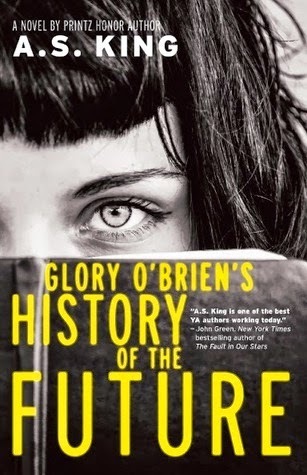 Glory O'Brien's History of the Future
by A. S. King
Glory O'Brien's History of the Future
by A. S. KingA. S. King's books are in a class by themselves, both in terms of genre and writing. Set solidly in our own world, they also use fantastical elements in such clever, creative, and meaningful ways. I'm always amazed by the level of craft in each of her novels. Her latest is no different.
Glory and her friend-by-default Ellie find a dead bat, which eventually disintegrates to something resembling ash. They decide to mix the remains with beer and then drink it (as you do). The next day, whenever they meet another person's eyes, they see glimpses of that person's past, present, and future - including ancestors and descendants. Glory's visions show her a terrible near future, one where women are denied the right to work and the United States splits into two, spawning a second Civil War. The people participating in these acts, both the atrocious and the heroic, are often the descendants of the people she knows, and possibly of herself as well.
A more traditional novel would have focused most of its attention on the mystery of the future, and there's certainly some of that going on. But it focuses an equal amount of attention on how the future informs Glory's present - her mother's suicide, her pseudo-friendship with Ellie, her relationship with her father, her plans for her own future. How do you live your life knowing that these things you see will come to pass? It's also a staunchly feminist novel, the extremism of the future tempered by the everyday sexism Glory experiences. Teens will easily see how one leads to the other. Because this is a King novel, I've only scratched the surface of its depth. There's a lot going on, and it all fits together to tell the complicated, messy story of Glory's teenage life. This might be my favorite of King's books. It has a few killer ending lines that legitimately gave me chills and rank right up there with the last lines of The Book Thief.
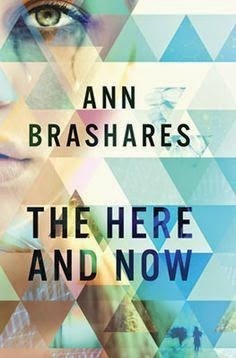 The Here and Now
by Ann Brashares
The Here and Now
by Ann BrasharesThis is the most traditional time travel story in this grouping. Prenna comes from a future not far off, one where a disease transmitted by mosquitoes has killed off millions of people. Though they haven't cured the illness, apparently they have figured out time travel, because Prenna, her mother, and a few others travel back to our own time in order to stop the plague from happening in the first place (it's tied to climate change).
Here's where the internal logic of the story loses me, because Prenna and the other time-colonists have a lot of rules to follow, and one of the rules is not to interfere with history. Which is kind of the whole point of them being there - to interfere and create a better future. So um, what is their point, after all? And none of the other characters seem to notice or care about this discrepancy. There's a somewhat engaging romance with a "time native," and some nifty plotting with a potential paradox and a couple of other surprise time travelers, but this was a mess overall. There are scads of better time travel novels out there, both better written and better-conceived. Recommended for only the most ardent time travel fans.
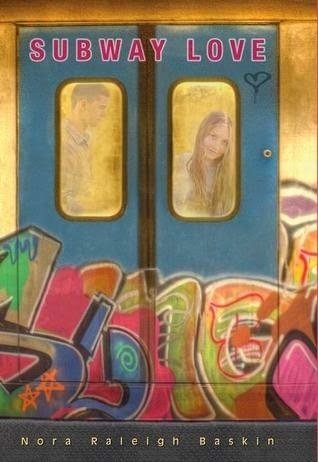 Subway Love
by Nora Raleigh Baskin
Subway Love
by Nora Raleigh BaskinI read this a couple weeks ago and already my memory of it is weak. The book focuses on two different characters - Laura in the 70s and Jonas in the present day. They each have problems within their homes. Laura's mother has gone full hippie, plus she's married a man just a few years older than Laura. He hits Laura and Laura's mom doesn't do anything about it. Jonas is dealing with his parents' recent divorce. The two teenagers meet each other on the subway, which is the only place where their two time periods overlap. They fall in love.
Baskin's writing style has always seemed more middle grade than YA to me. The content of this one is more mature, though, making it hard to recommend for a specific age group. It's a slim novel, easily absorbed in an afternoon, but its impact is equally fleeting. There's some interesting stuff about graffiti artists on the subway, which will definitely appeal to kids into street art. Ultimately, the book is a rumination on how some relationships can change us, even if those relationships do not - and cannot - last. I wonder if I would have appreciated it more as a short story.







 Related StoriesA Few Cybils Reads - Part VIIIA Few Cybils Reads - Part IVA Few Cybils Reads - Part VII (Audiobook Edition)
Related StoriesA Few Cybils Reads - Part VIIIA Few Cybils Reads - Part IVA Few Cybils Reads - Part VII (Audiobook Edition)
Published on December 15, 2014 22:00
December 14, 2014
2015 YA Book Cover Trends: Part I

Every year when the end of December is in sight, I like to spend a little time looking through the covers for books coming out in the new year. It's always interesting to spot trends going on in design. Covers are a big part of the marketing of a book, and this is especially try in YA -- trends for book cover design tend to come and go in waves, hoping to capitalize off what looks are doing particularly well.
As interesting to me is seeing what sorts of design trends or micro-trends or similarities are similar to those which have come in years past. For 2015, as seen in the last couple of years, there's an abundance of birds appearing on covers, either as the main image of the cover or as part of a bigger image. I've skipped including a section on font-driven covers or covers where the title takes up more than have the cover real estate because not only has it been a trend for the last two years or so, but it's so common that pulling them together would take a long, long time.
This is a two-part post, with part two coming on Thursday, as there are a lot of interesting and unique trends and commonalities worth looking at and thinking about. Some covers fall into only one category, while others have found themselves across multiple trend groups.
I'd love to know if you are aware of other covers fitting any of these categories. Because this would otherwise be too long a pair of posts, I'm not including book descriptions, but rather, links to the titles on Goodreads so you can check them out for yourself and, if you want, add them to your to-be-read lists. Hopefully, some of these books will be new ones to get on your radar.
Put a Bird on It
I feel like I've made the same Portlandia joke in a few posts, but it still stands. Birds continue to be popular on covers of YA books.
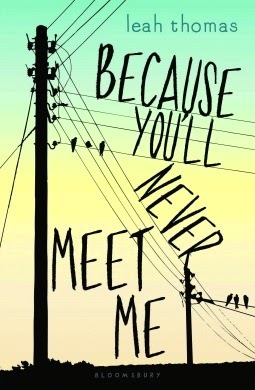
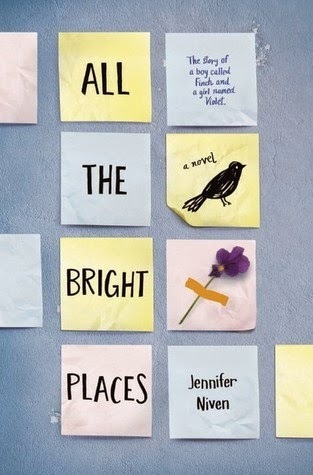
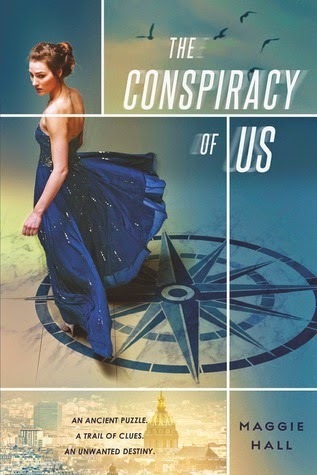
Because You'll Never Meet Me by Leah Thomas
All The Bright Places by Jennifer Niven
The Conspiracy of Us by Maggie Hall
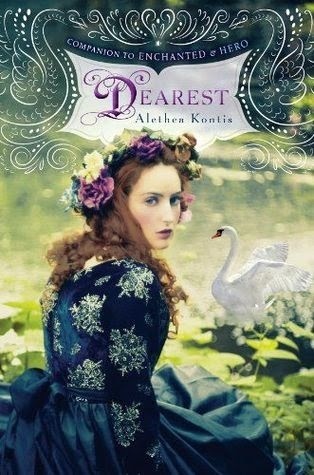
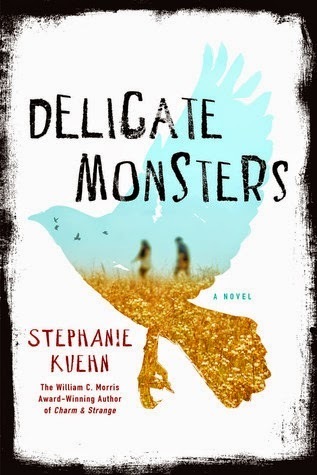
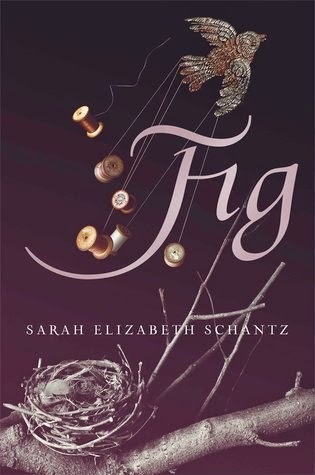
Dearest by Althea Kontis
Delicate Monsters by Stephanie Kuehn
Fig by Sarah Elizabeth Schantz
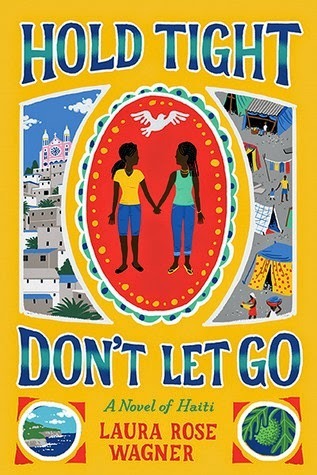
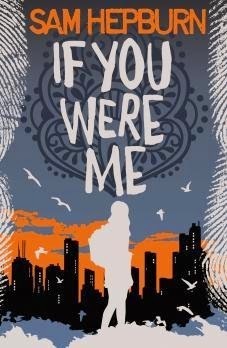
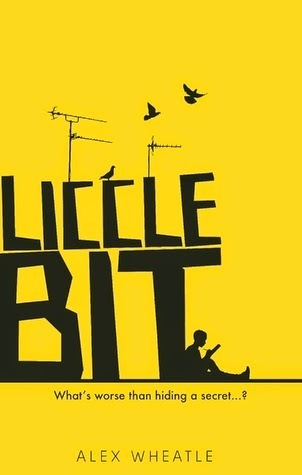
Hold Tight, Don't Let Go by Laura Rose Wagner
If You Were Me by Sam Hepburn
Little Bit by Alex Wheatle
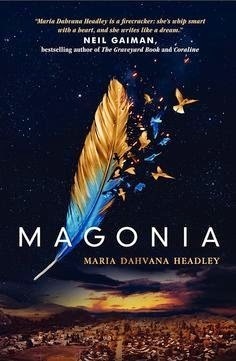
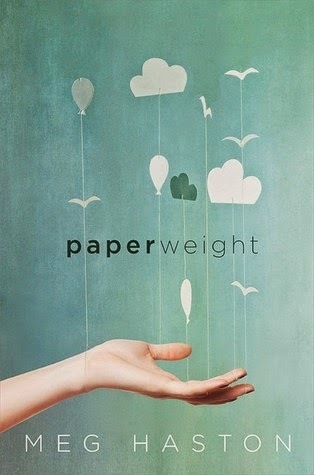
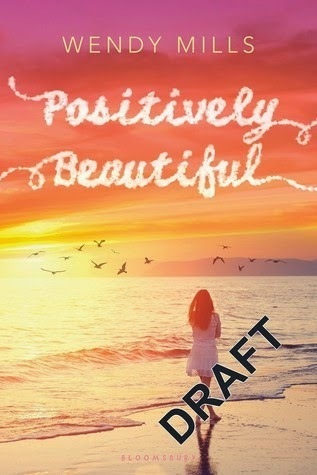
Magonia by Maria Dahvana Headley
Paperweight by Meg Haston
Positively Beautiful by Wendy Mills (I'm not sure why I can only find a draft cover for this)
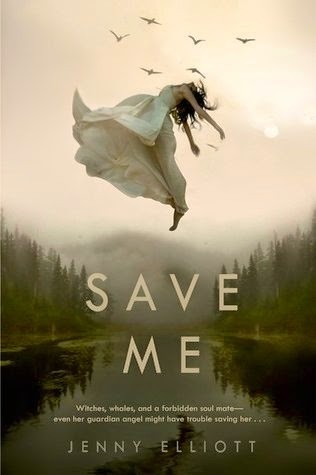
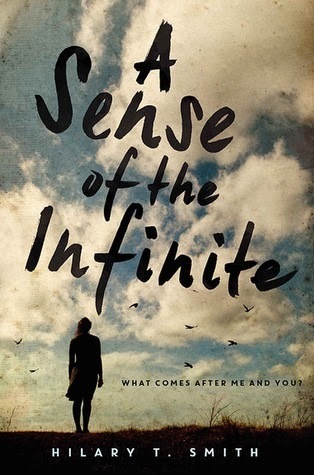
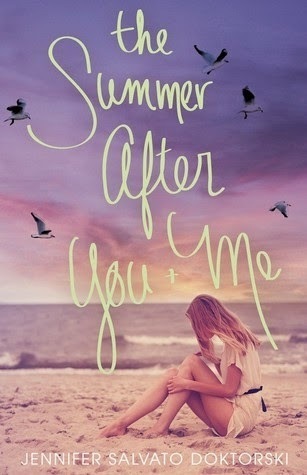
Save Me by Jenny Elliott
A Sense of the Infinite by Hilary T. Smith
The Summer After You and Me by Jennifer Salvato Doktorski
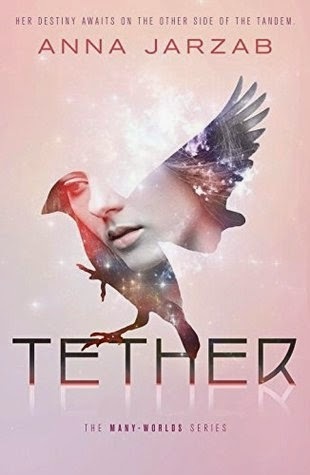
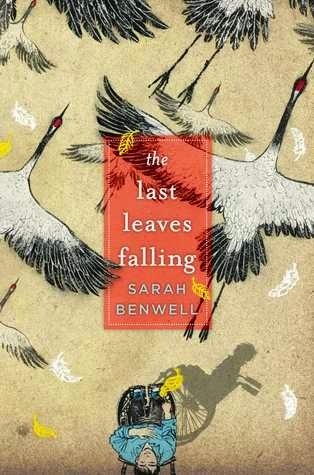

Tether by Anna Jarzab
The Last Leaves Falling by Sarah Benwell
Things I'll Never Say edited by Ann Angel
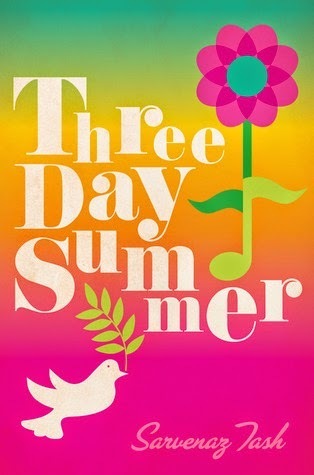
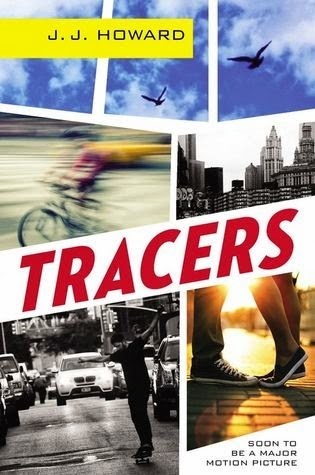
Three Day Summer by Sarvenaz Tash
Tracers by J. J. Howard (Which uses the same stock image seen in this post)
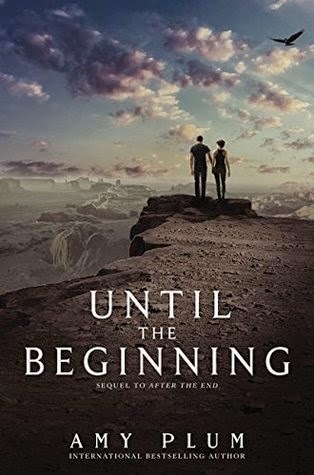
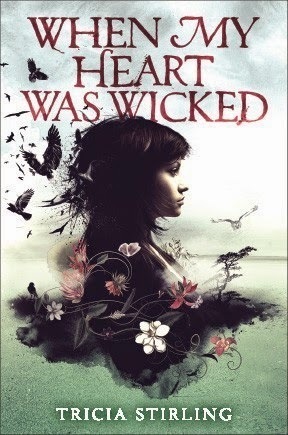
Until the Beginning by Amy Plum
When My Heart Was Wicked by Tricia Stirling
Legs
One body part there's a lot of in 2015? Legs. Some of them are covered and some of them aren't. But legs!
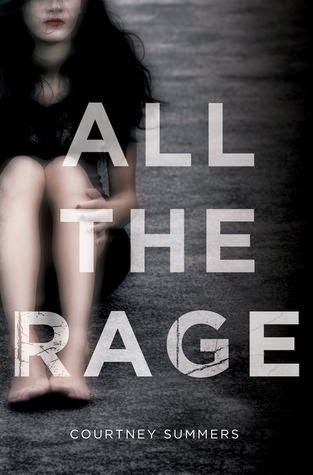
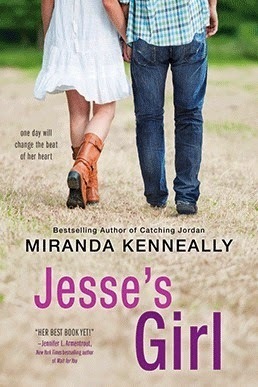
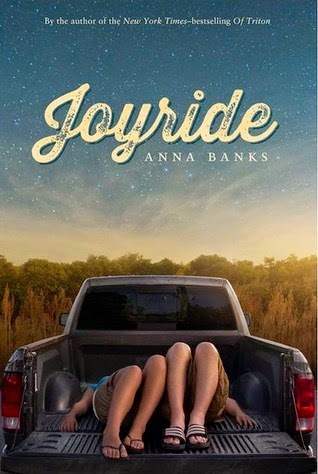
All The Rage by Courtney Summers
Jesse's Girl by Miranda Kenneally
Joyride by Anna Banks
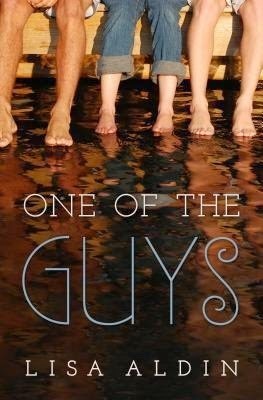
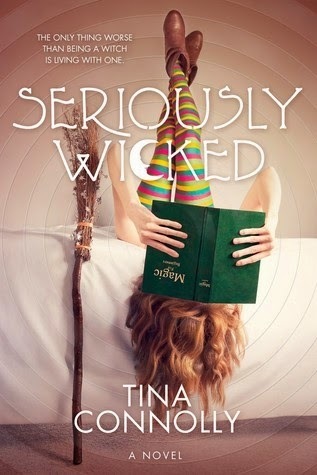
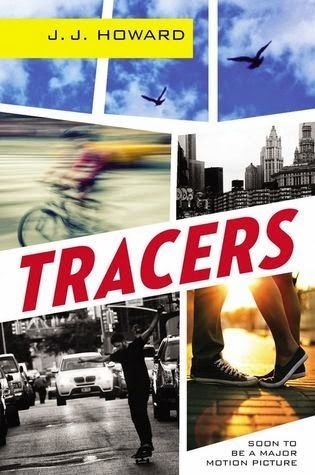
One of the Guys by Lisa Aldin
Seriously Wicked by Tina Connolly
Tracers by J. J. Howard

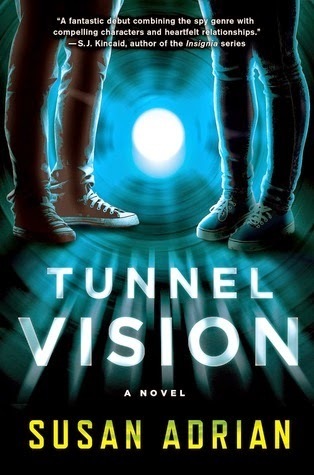
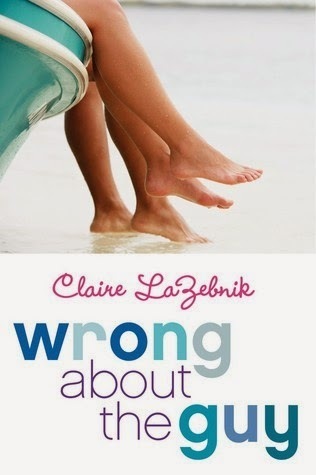
The Truth About My Success by Dyan Sheldon
Tunnel Vision by Susan Adrian
Wrong About The Guy by Claire LaZebnik
Post-It Notes
I'm fond of using post-its, almost to a fault, and I think they make for a nice look on a book cover.
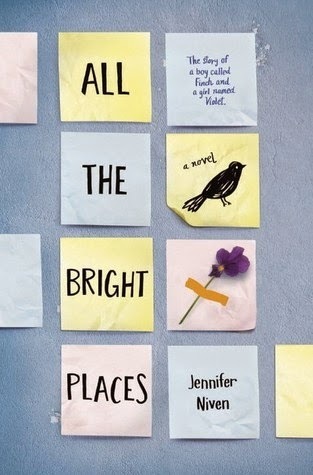
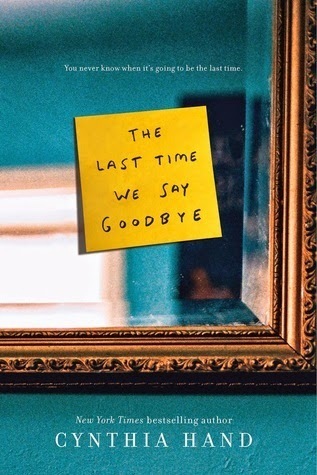
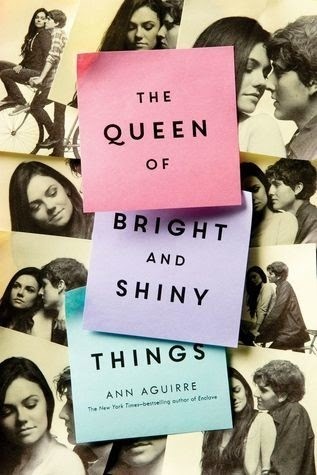
All The Bright Places by Jennifer Niven
The Last Time We Say Goodbye by Cynthia Hand
The Queen of Bright and Shiny Things by Ann Aguirre
That "Instagram" Look
A number of cover images are being filtered in a very Instagram-style way, not to mention they're styled either like selfies or the kind of pictures you'd see scrolling through a teen's Instagram account. I'm pretty sure there are more covers that would fit this Instagram-y trend, but I'm limiting to the obvious ones.
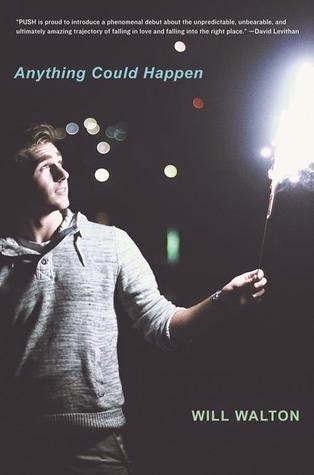
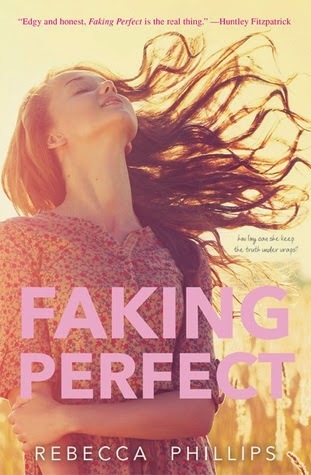
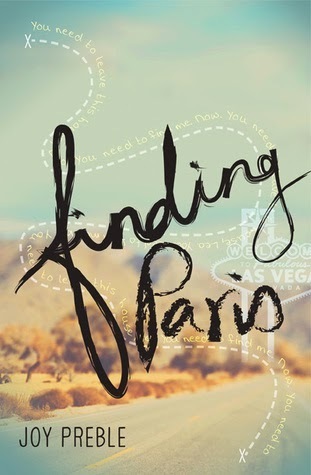
Anything Could Happen by Will Walton
Faking Perfect by Rebecca Phillips
Finding Paris by Joy Preble

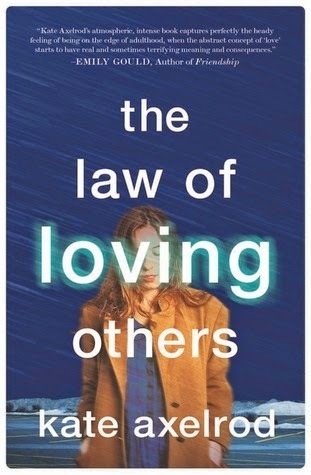
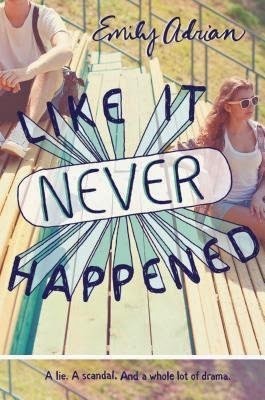
First There Was Forever by Juliana Romano
The Law of Loving Others by Kate Axelrod
Like It Never Happened by Emily Adrian

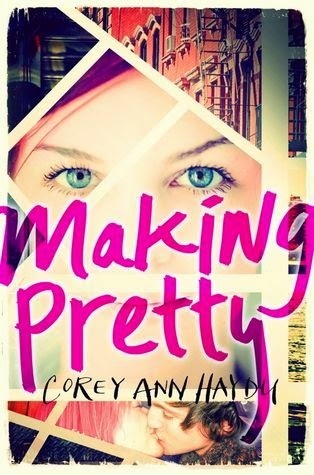
Love is in the Air by A. Destiny and Alex Kahler
Making Pretty by Corey Ann Haydu

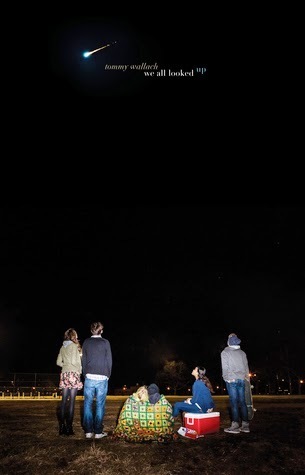
Stand Off by Andrew Smith
We All Looked Up by Tommy Wallach
Devils
There may only be 2 of them, but I find this cover commonality amusing and enjoyable. I think the Schreiber cover is especially clever.
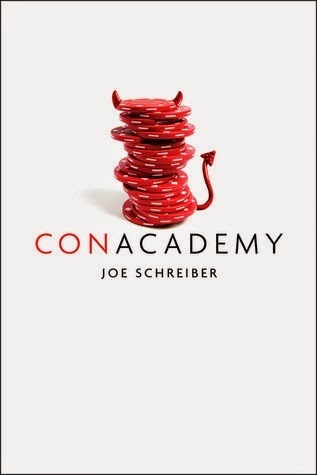
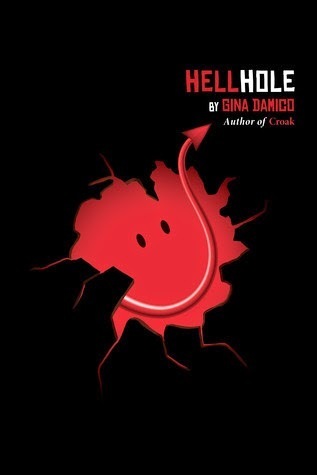
Con Academy by Joe Schreiber
Hellhole by Gina Damico
Thorns and Vines
There's something crawling along the sides or centers of these covers, be they thorns or vines or flowery twigs.
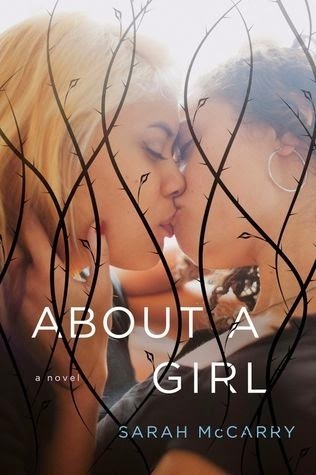
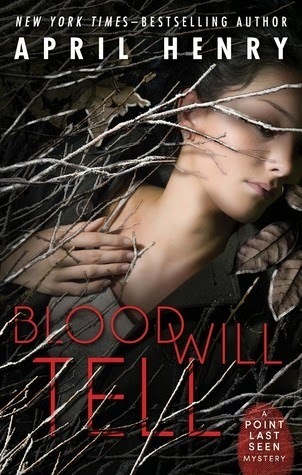
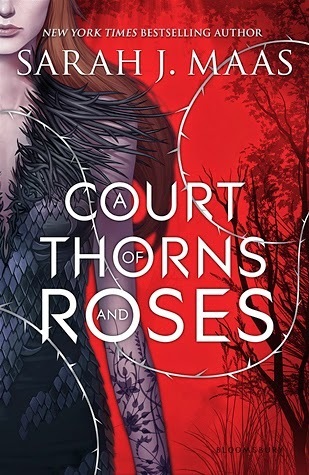
About A Girl by Sarah McCarry
Blood Will Tell by April Henry
A Court of Thorns and Roses by Sarah J. Maas
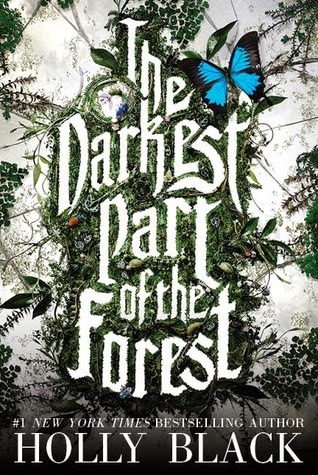
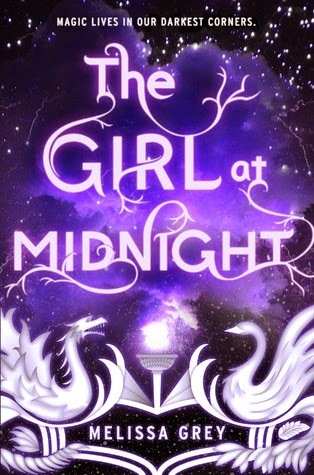
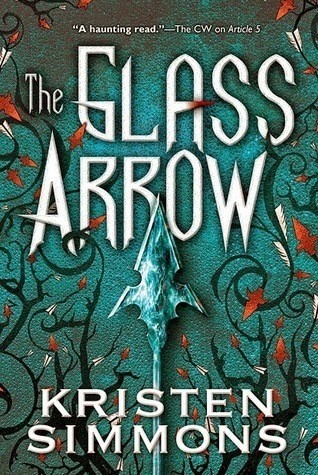
The Darkest Part of the Forest by Holly Black
The Girl at Midnight by Melissa Grey
The Glass Arrow by Kristen Simmons
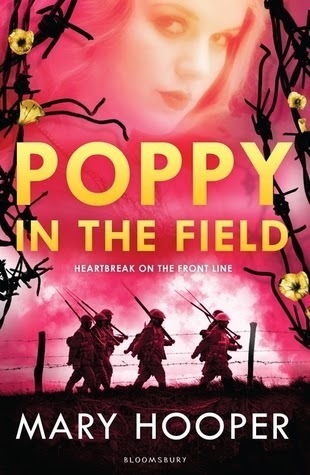
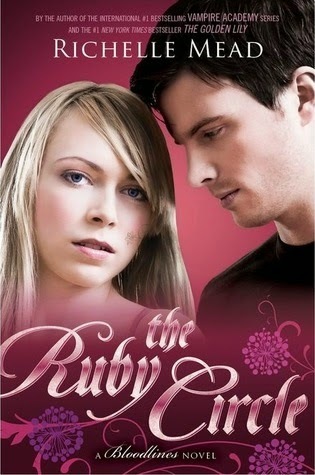
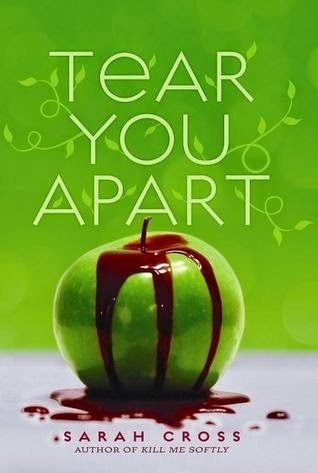
Poppy in the Field by Mary Hooper
The Ruby Circle by Richelle Mead
Tear You Apart by Sarah Cross
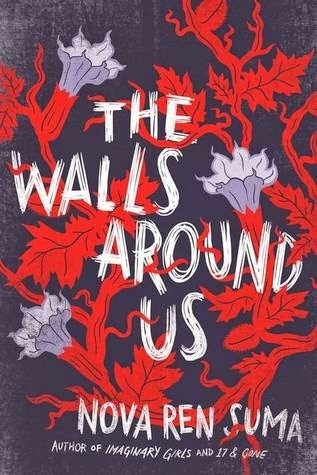
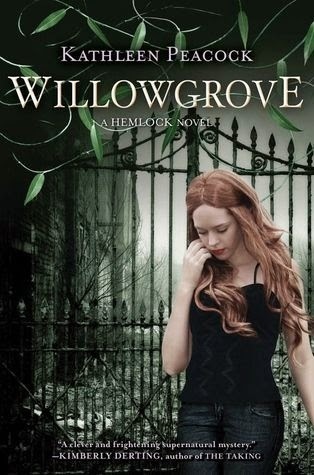
The Walls Around Us by Nova Ren Suma
Willowgrove by Kathleen Peacock
Light-up Place Signs
I can't wait for two of these three covers to be continuously confused next year because they're so similar.
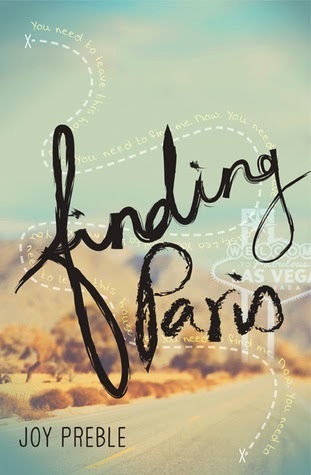
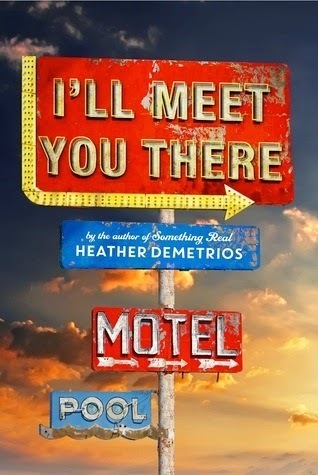
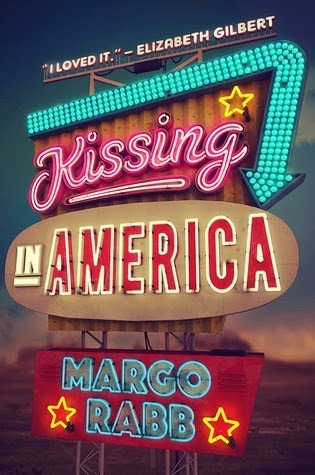
Finding Paris by Joy Preble
I'll Meet You There by Heather Demetrios
Kissing in America by Margo Rabb
Fingerprints
While there are a couple of noteworthy covers featuring hands, I think the fingerprints on covers is more interesting to look at.
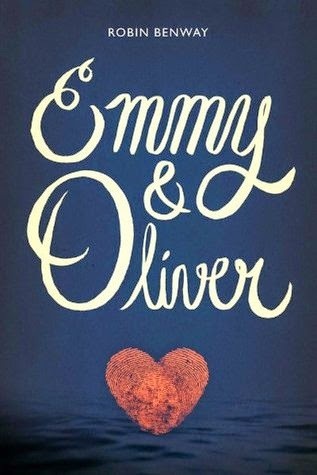
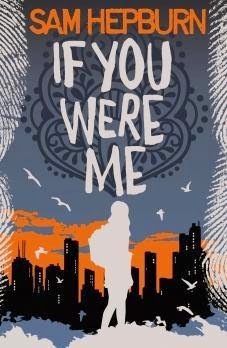
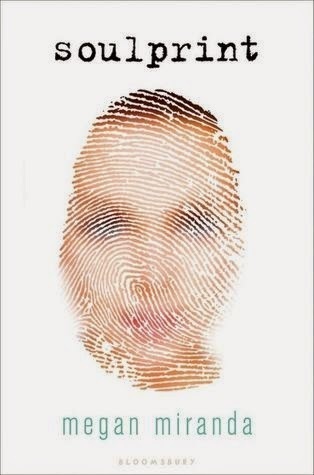
Emmy & Oliver by Robin Benway
If You Were Me by Sam Hepburn
Soulprint by Megan Miranda
Cityscapes
This has been a trend for a while, probably because having a nice cityscape on a cover feels like it's action-adventure or a good post-apocalyptic/dystopian story.
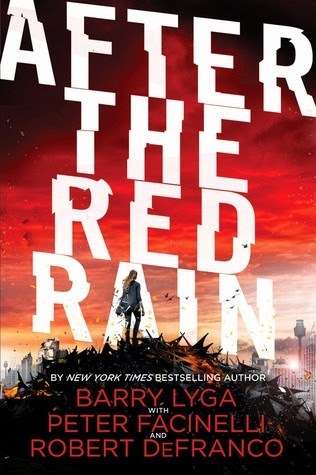
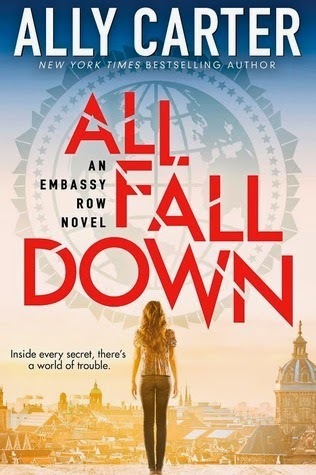
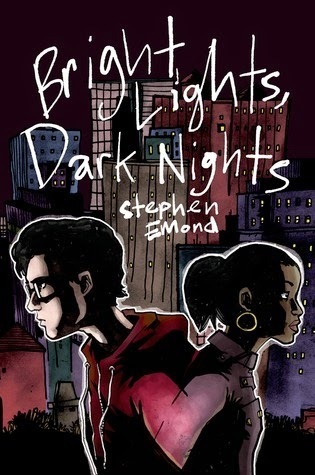
After the Red Rain by Barry Lyga, Peter FAcinelli, and Robert DeFranco
All Fall Down by Ally Carter
Bright Lights, Dark Nights by Stephen Emond
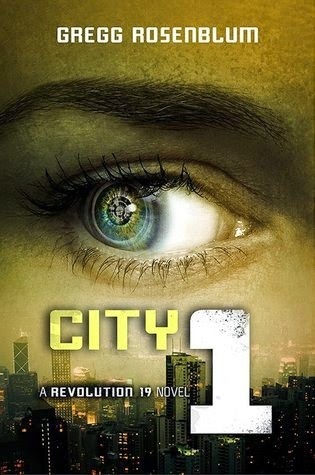
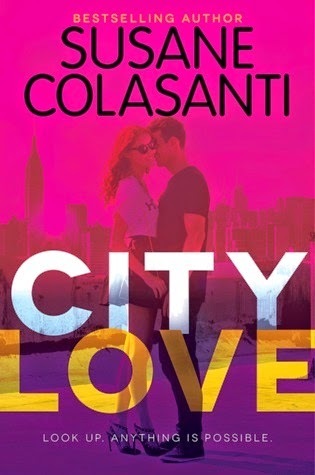
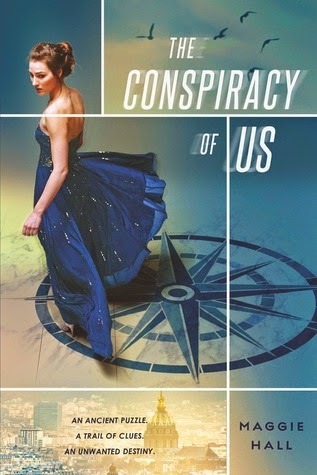
City 1 by Greg Rosenblum
City Love by Susane Colasanti
The Conspiracy of Us by Maggie Hall
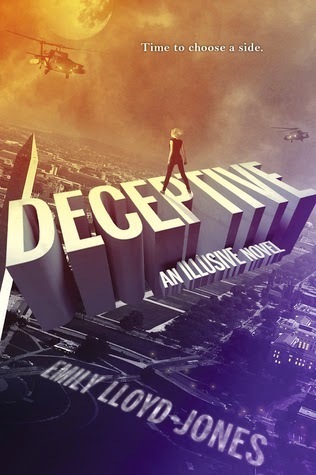
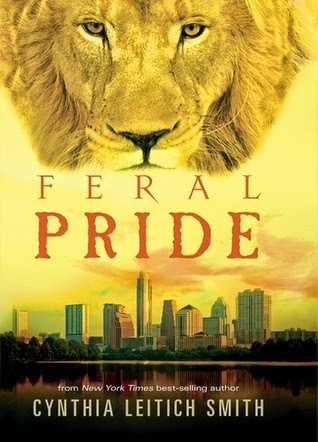
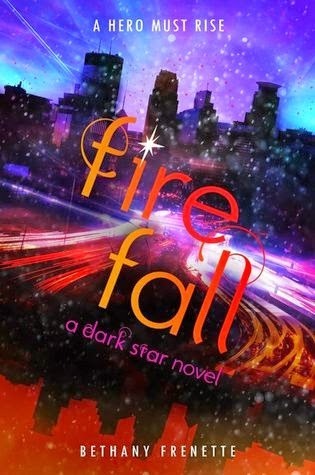
Deceptive by Emily Lloyd-Jones
Feral Pride by Cynthia Leitich Smith (I love that this is the Austin skyline -- I've never seen that on a book cover before!)
Fire Fall by Bethany Frenette
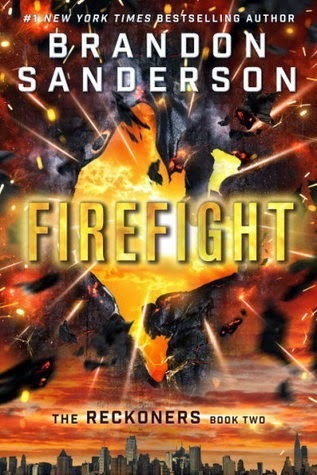
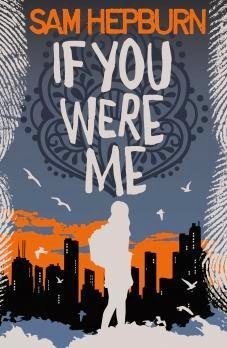
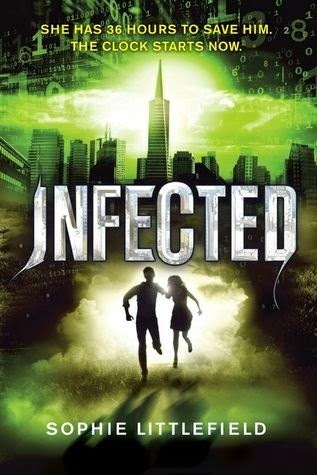
Firefight by Brandon Sanderson
If You Were Me by Sam Hepburn
Infected by Sophie Littlefield
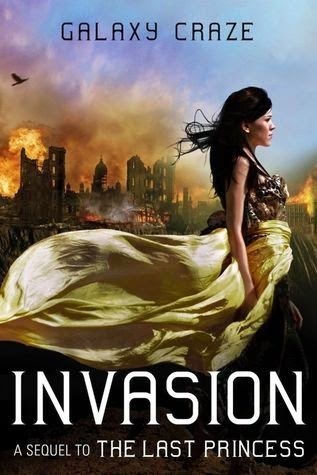
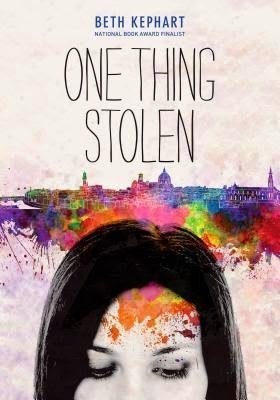
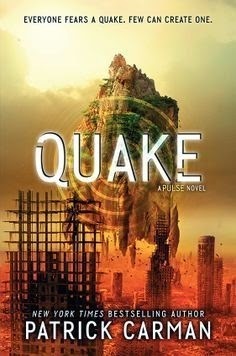
Invasion by Galaxy Craze
One Stolen Thing by Beth Kephart
Quake by Patrick Carman
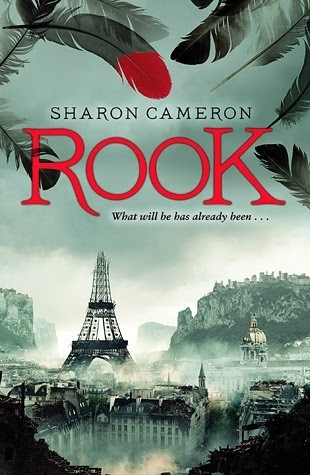
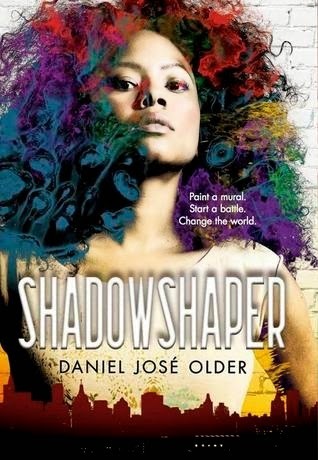

Rook by Sharon Cameron
Shadowshaper by Daniel Jose Older
Skyscraping by Cordelia Jensen
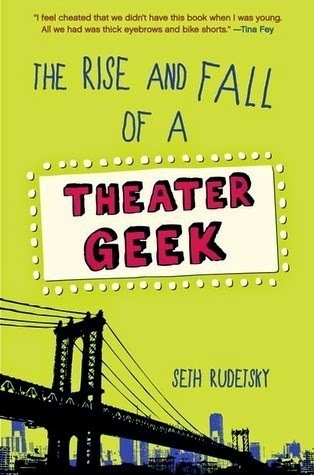
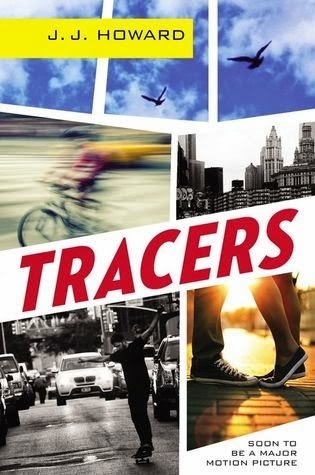
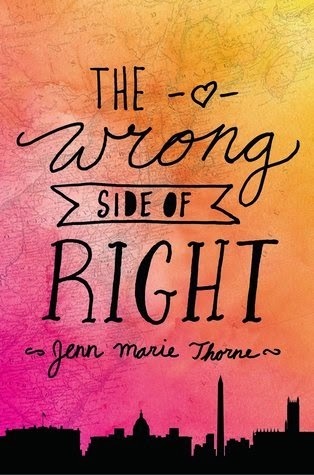
The Rise and Fall of a Theater Geek by Seth Rudetsky
Tracers by J. J. Howard (When your cover is made up of a ton of images collaged together, you're going to fit into a ton of trends)
The Wrong Side of Right by Jenn Marie Thorne
We're on a Boat
The popular mode of transportation on YA covers in 2015 is the boat.
The boat.
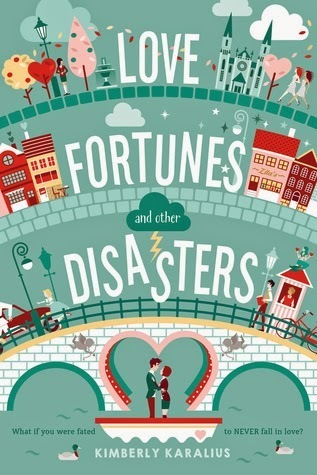
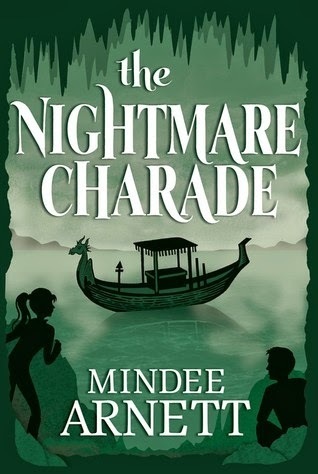
Love, Fortunes, and Other Disasters by Kimberly Karalius
The Nightmare Charade by Mindee Arnett
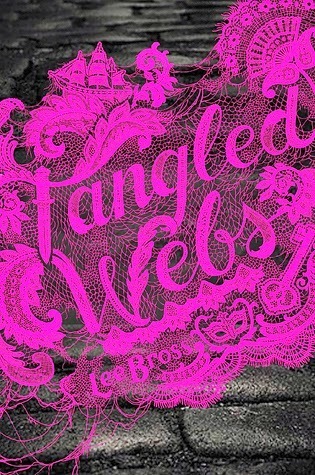
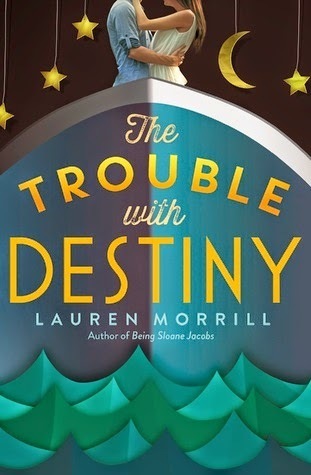
Tangled Webs by Lee Bross
The Trouble with Destiny by Lauren Morrill
Planes Aren't Disappearing Though
Maybe it's just popular to have a mode of transportation on a cover, since it seems as though planes are doing well, too. When you don't want a bird, why not use a plane?
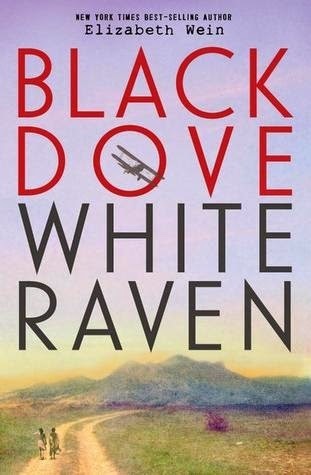
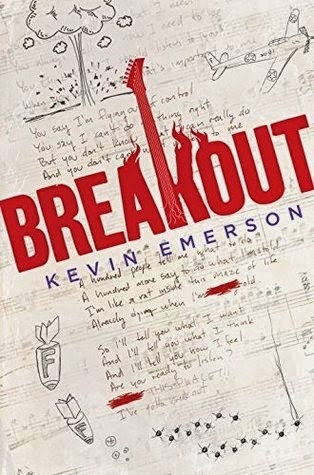
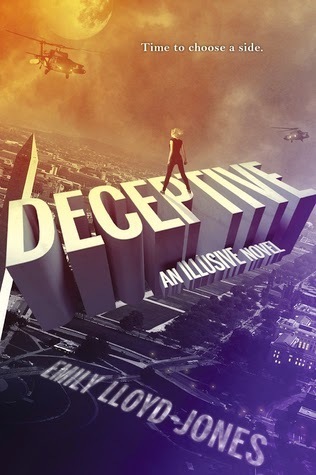
Black Dove, White Raven by Elizabeth Wein
Breakout by Kevin Emerson
Deceptive by Emily Lloyd-Jones
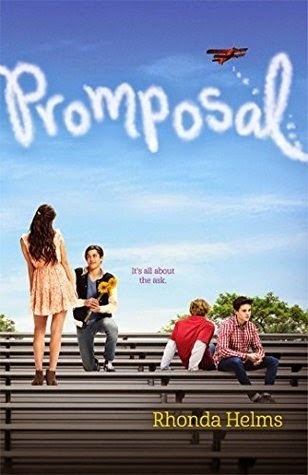
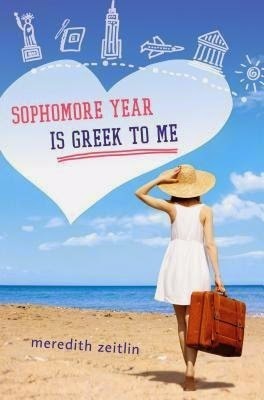
Promposal by Rhonda Helms
Sophomore Year is Greek to Me by Meredith Zeitlin
Floating Heads on a Blue Background
Let's end the first post in this two-part series with one of the weirder commonalities. This isn't a trend, per se, but it caught my eye as I was looking through covers. I can't wait to see how quickly these two become confused by readers and those who work with readers because they're both weird and weirdly similar.
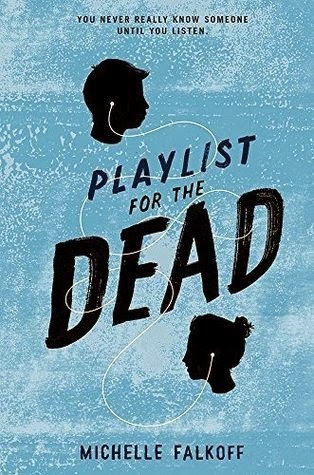
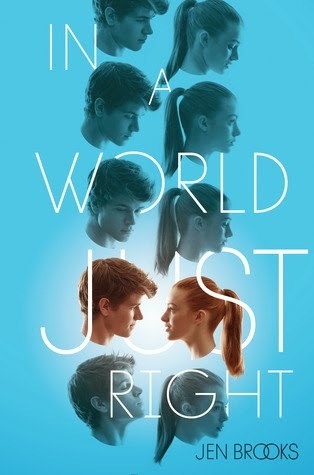
Playlist for the Dead by Michelle Falkoff
In A World Just Right by Jen Brooks







 Related StoriesFabulously Diverse YA Book Covers We Should See More OftenHardcover to Paperback Makeovers: Backlist YA Covers To ConsiderBuzz-worthy Covers: Bees All Around Us
Related StoriesFabulously Diverse YA Book Covers We Should See More OftenHardcover to Paperback Makeovers: Backlist YA Covers To ConsiderBuzz-worthy Covers: Bees All Around Us
Published on December 14, 2014 22:00
December 13, 2014
Guest Post on Fatness and YA at Twinjas Book Reviews
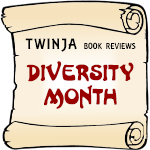
I have a guest post over at Twinja Book Reviews as part of their month-long series of diversity discussions (which you should be reading because they're awesome).
My post is about fatness and YA.







 Related Stories"Best of YA" Lists By the Numbers: 2011 - 2014 Stats, Comparisons, and ThoughtsGet Genrefied: Christian FictionA Few Cybils Reads - Part VIII
Related Stories"Best of YA" Lists By the Numbers: 2011 - 2014 Stats, Comparisons, and ThoughtsGet Genrefied: Christian FictionA Few Cybils Reads - Part VIII
Published on December 13, 2014 06:14
December 11, 2014
This Week at Book Riot
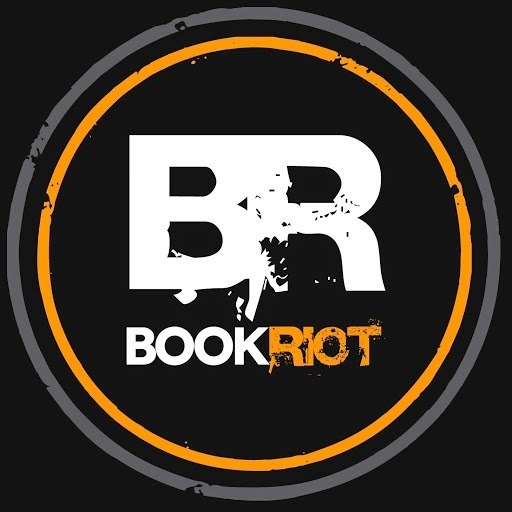
Over at Book Riot this week . . .
3 On A YA Theme features three books that are set in Africa. I rounded-up tons and tons of fun bookish socks, if you're looking for some stocking stuffers or something fun to wear on your own feet.







 Related StoriesThis Week on Book Riot & The Book SmugglersThis Week at Book Riot
Related StoriesThis Week on Book Riot & The Book SmugglersThis Week at Book Riot
Published on December 11, 2014 22:00



